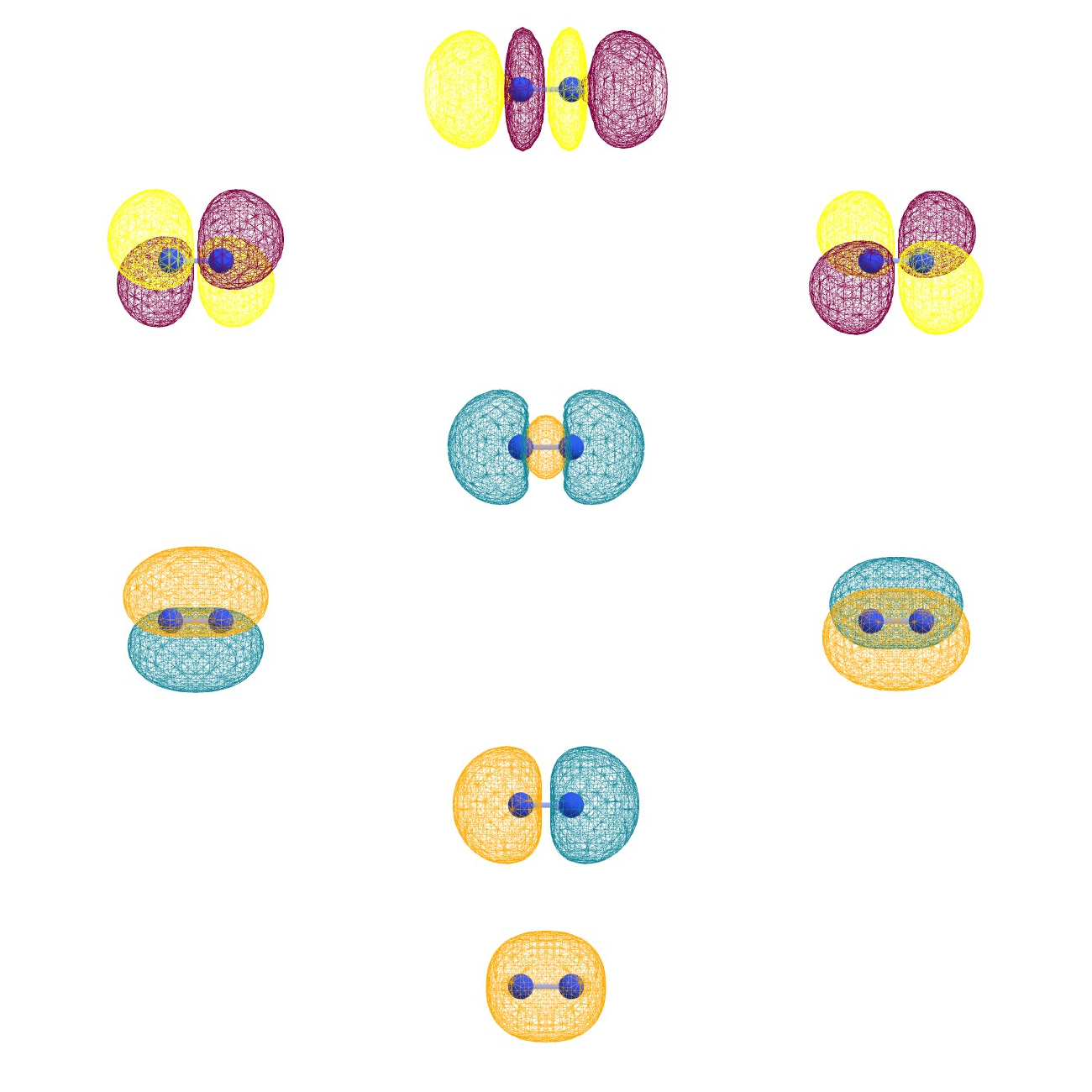There is a significant portion of s-p mixing in dinitrogen.
Please see this great answer by Wildcat on Molecular orbital (MO) diagram for $\ce{N2}$ and $\ce{N2^-}$.
For the impatient, I'll quote an image from myself from How to rationalise with MO theory that CO is a two-electron donor through carbon?

I have marked these interactions with the dotted lines. To show these valence MO in all their glory, I've performed a calculation on the RI-BP86/def2-SVP level of theory with Orca.

The analysis (main atomic orbitals) of these orbitals showed, above they are shown in reverse order:
MO 3 (occ.=2.00, E=-1.022230)
N2 (S on atom N1) [0.416], N16 (S on atom N2) [0.416]
MO 4 (occ.=2.00, E=-0.485050)
N2 (S on atom N1) [0.435], N16 (S on atom N2) [-0.435],
N3 (S on atom N1) [0.427], N17 (S on atom N2) [-0.427],
N15 (S on atom N2) [-0.201], N1 (S on atom N1) [0.201],
N5 (Px on atom N1) [0.200], N19 (Px on atom N2) [0.200],
N8 (Px on atom N1) [-0.066], N22 (Px on atom N2) [-0.066],
N13 (D+2 on atom N1) [-0.015], N27 (D+2 on atom N2) [0.015],
N10 (D 0 on atom N1) [0.009], N24 (D 0 on atom N2) [-0.009]
MO 5 (occ.=2.00, E=-0.421640)
N4 (Pz on atom N1) [-0.422], N18 (Pz on atom N2) [-0.422],
N7 (Pz on atom N1) [0.225], N21 (Pz on atom N2) [0.225],
N6 (Py on atom N1) [-0.164], N20 (Py on atom N2) [-0.164],
N9 (Py on atom N1) [0.087], N23 (Py on atom N2) [0.087],
N11 (D+1 on atom N1) [0.033], N25 (D+1 on atom N2) [-0.033],
N14 (D-2 on atom N1) [0.013], N28 (D-2 on atom N2) [-0.013]
MO 6 (occ.=2.00, E=-0.421640)
N6 (Py on atom N1) [-0.422], N20 (Py on atom N2) [-0.422],
N9 (Py on atom N1) [0.225], N23 (Py on atom N2) [0.225],
N18 (Pz on atom N2) [0.164], N4 (Pz on atom N1) [0.164],
N7 (Pz on atom N1) [-0.087], N21 (Pz on atom N2) [-0.087],
N14 (D-2 on atom N1) [0.033], N28 (D-2 on atom N2) [-0.033],
N11 (D+1 on atom N1) [-0.013], N25 (D+1 on atom N2) [0.013]
MO 7 (occ.=2.00, E=-0.371870)
N5 (Px on atom N1) [-0.452], N19 (Px on atom N2) [0.452],
N3 (S on atom N1) [-0.299], N17 (S on atom N2) [-0.299],
N8 (Px on atom N1) [0.194], N22 (Px on atom N2) [-0.194],
N16 (S on atom N2) [-0.134], N2 (S on atom N1) [-0.134],
N15 (S on atom N2) [-0.074], N1 (S on atom N1) [-0.074],
N13 (D+2 on atom N1) [0.016], N27 (D+2 on atom N2) [0.016],
N10 (D 0 on atom N1) [-0.009], N24 (D 0 on atom N2) [-0.009]
MO 8 (occ.=0.00, E=-0.071630)
N7 (Pz on atom N1) [-0.528], N21 (Pz on atom N2) [0.528],
N4 (Pz on atom N1) [0.513], N18 (Pz on atom N2) [-0.513],
N9 (Py on atom N1) [-0.032], N23 (Py on atom N2) [0.032],
N20 (Py on atom N2) [-0.031], N6 (Py on atom N1) [0.031],
N11 (D+1 on atom N1) [0.013], N25 (D+1 on atom N2) [0.013],
N14 (D-2 on atom N1) [0.001], N28 (D-2 on atom N2) [0.001]
MO 9 (occ.=0.00, E=-0.071630)
N9 (Py on atom N1) [0.528], N23 (Py on atom N2) [-0.528],
N6 (Py on atom N1) [-0.513], N20 (Py on atom N2) [0.513],
N7 (Pz on atom N1) [-0.032], N21 (Pz on atom N2) [0.032],
N18 (Pz on atom N2) [-0.031], N4 (Pz on atom N1) [0.031],
N14 (D-2 on atom N1) [-0.013], N28 (D-2 on atom N2) [-0.013],
N11 (D+1 on atom N1) [0.001], N25 (D+1 on atom N2) [0.001]
MO 10 (occ.=0.00, E=0.456580)
N3 (S on atom N1) [-3.853], N17 (S on atom N2) [3.853],
N8 (Px on atom N1) [-2.584], N22 (Px on atom N2) [-2.584],
N16 (S on atom N2) [0.543], N2 (S on atom N1) [-0.543],
N5 (Px on atom N1) [0.266], N19 (Px on atom N2) [0.266],
N15 (S on atom N2) [0.162], N1 (S on atom N1) [-0.162],
N13 (D+2 on atom N1) [0.035], N27 (D+2 on atom N2) [-0.035],
N10 (D 0 on atom N1) [-0.020], N24 (D 0 on atom N2) [0.020]
The main concern is MO 7, which shows significant s contribution.


